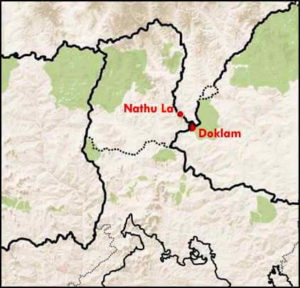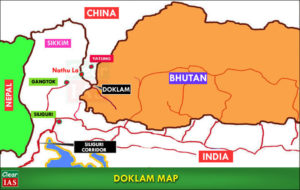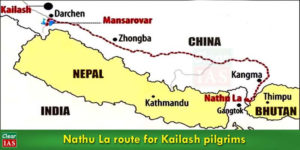It is very much obvious for a country to deal with disputes that share its borders with neighboring countries. In particular, India shares its borders with 7 neighboring countries. Dealing with border disputes is something that India is facing from the very initial stage of its independence. Right after British India was divided into two countries on the basis of religion, India faced initial attacks from Pakistan. Not just Pakistan, India also had to deal with China, Nepal, and Bangladesh countries. At present we are reading about India having border tensions with China and Nepal. In this article let us know everything about India and china wars from the past to the present.
It was not just Pakistan who was claiming part of India; China has its hands too. While the western part of Jammu is claimed by Pakistan, the eastern part (Aksai Chin in Ladakh) and North Eastern Frontier Agency (Arunachal Pradesh) was claimed by China. These border conflicts resulted in war and it was the Sino-Indian war 1962. At the time of this war, China was powerful in the military but India didn’t. India approached Britain and the USA for military assistance to fight this war.
India was confident that the war would not happen. But china proved the confidence of India as wrong by advancing troops in Ladakh and McMahon line of Arunachal Pradesh.

McMahon line: This demarcation line was proposed by Henry McMahon in 1914 at the Simla convention signed between British and Tibetan representatives to divide the Tibetan region of China and India.
China after achieving its goal of acquiring control over Aksai Chin, the troops in Mc Mahon line of Arunachal Pradesh went back.
Aftermath the war there was instances of Chinese troops entering Indian borders vice-versa. In 1967 there were two incidents of armed conflicts at Nathu La and Cho La. But in these two conflicts, India was able to send back the Chinese military.
Agreements and settlements between India and china:
Simla agreement of 1914- This was an agreement between British India and Tibet where Mc Mahon line was proposed as the demarcation. But China rejected the agreement saying that Tibet was not a sovereign state which did not hold any powers to conclude and sign treaties.
Panchsheel agreement of 1954- It was agreed by both countries to respect each other’s sovereignty and territorial integrity
CBMs of 1989- India-China formed a Joint Working Group for Confidence-building measures (CBMs) and agreed to mutually settle all border disputes.
India-china agreement of LAC- Line of actual control (LAC) is a practical boundary which is not to be recognized as an international boundary. Ironically, India considers the Johnson line of 1865 mark by a civil servant of British India which puts Aksai Chin in the Kashmir region of India, and China considers Macartney-Macdonald Line as the actual boundary which puts Aksai Chin in the Xinjiang region of China.
LAC peace agreement- The Agreement for Maintenance of Peace and Tranquility along the LAC has been signed between India and China under the leadership of former Prime Minister P.V Narasimha Rao.
Special Representatives (2003) – India and China signed a Declaration on Principles for Relations and Comprehensive Cooperation. They mutually decided to appoint special representatives to settle border disputes politically. China recognized India’s sovereignty over Sikkim.
2005- A protocol was agreed for implementation of Confidence Building Measures (CBM) in the military field of Line of Actual Control (LAC). They agreed to safeguard and respect the interests of border people.
2012– Establishment of a working mechanism for Consultation and Coordination on India China borders.
Recent Nathu la and Doklam issue:
Doklam is a place in a junction place that connects China, India, and Bhutan. China believes that Doklam is a disputed place between China and Bhutan. India placed its troops at Doklam and supports Bhutan and this behavior of India on the issue is condemned by China. Tensions started when the Indian Army objected to road construction by the People’s Liberation Army (PLA) of China in Doklam. The road being constructed is very near to the Siliguri corridor. Hence, it gives major access to China in India.


China accused India of depositing troops in their territory (China believes Doklam as its territory) and India accused PLA of China for destroying fuel tanks of the Indian Army. Later, China stopped Nathu La pass in Sikkim which is a better route for pilgrims to Kailash-Mansarovar.

Why India support Bhutan?
- India and Bhutan have a friendly relationship that is not there between Bhutan and China.
- The place Nathu la at which India deposited its troops belongs to the Indian state of Sikkim and is also very close to the Siliguri corridor that connects India with its seven Eastern states.
- A friendship treaty was signed between India and Bhutan in 2007 in which India has to protect Bhutan’s interests as well as good coordination of militaries of two countries.
India accused PLA of china for erecting tents in Gagan valley in which India believed that it belongs to LAC. China accused the Indian Army of trespassing into its territory, claiming that it was an “attempt to unilaterally change the status” of the LAC in Sikkim and Ladakh.
Other issues between India and China:
- China has veto power in the UNSC (United Nations Security Council). It objects India’s entry into UNSC and in Nuclear Supplier’s Group (NSG).
- China is critical of the India-USA relationship and India’s support to the USA and other countries in freedom of international waters that include the South China sea.
- India gave refugee status to Tibetan spiritual leader DALAI LAMA. The recent visit of the Dalai Lama to Arunachal Pradesh is again a conflict to both sides.
- India’s bid to get Jaish-e-Mohammad chief Masood Azhar to be declared as an UN-designated terrorist that was blocked by China’s veto power in UNSC. China is of the view that India is trying to pursue political gains in the name of counter-terrorism.
-SHIVASAI BANDARI (FRONTLINES MEDIA)



